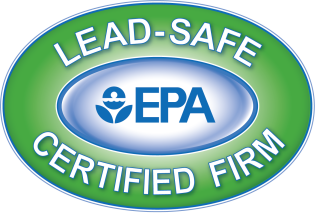Crawl spaces are notorious for growing mold. How do you know if you need crawl space mold removal? When mold grows in your home, there are symptoms of that mold you need to know. What do you do if you think you have mold? Keep reading to learn everything you need to know about crawl space mold removal.
DISCLAIMERS:
Blog information is NOT intended to provide or replace medical advice. NO information on this site should be used to diagnose, treat, prevent or cure any disease or condition.
*As an Amazon Associate we earn from qualifying purchases.
Suggestions for products to use are just that, suggestions. You know yourself and your home best. Please do your own research on any product you use in your home or on your skin, and learn all the facts for yourself. Thank you.
SYMPTOMS OF MOLD IN YOUR CRAWL SPACE
How do you know if you have mold in your crawl space? Musty smells (think wet dog, old gym sock type smells) in your home or coming from your crawl space may be the first clue you have a mold problem. Mold grows because of excess moisture. Anything that causes excess moisture in your crawl space can cause mold to grow such as:
- condensation on air conditioning ductwork or water pipes
- leaking pipes
- moisture damage
- high humidity in the living area
- buckled hardwood floors
- insect infestations
- rot of floor timbers
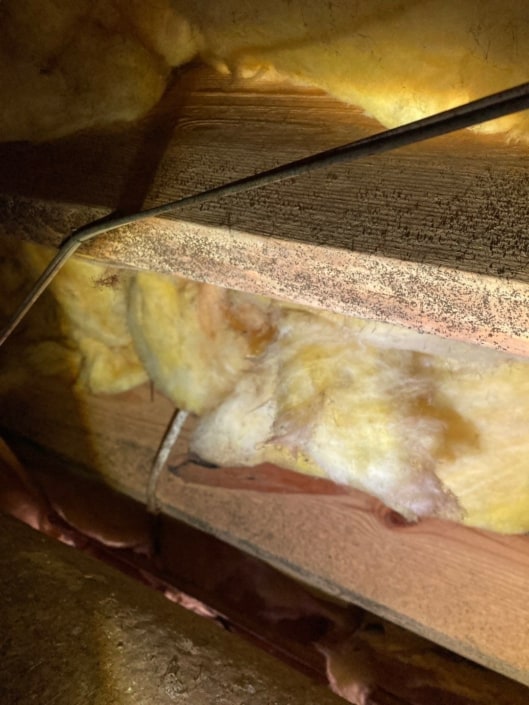
WHAT IS MOLD ANYWAY?
Molds are fungi. Fungi are neither animals nor plants. They inhabit a kingdom all their own. Fungi are spore producing organisms that feed on organic matter and include: yeasts, mildews, rusts, smuts, molds, and mushrooms. Fungi grow using filaments or hyphae that make up their bodies (mycellia). They digest organic matter externally before absorbing the nutrients.
HOW DOES MOLD GROW?
Molds grow from microscopic spores that are universal. You can find molds on every continent, and in almost every type of environment. Mold needs 4 things to grow: oxygen, moisture, a food source, and warmth. Molds grow inside of their food sources. They can penetrate deeply into drywall, carpets, underneath kitchen and bathroom sinks, etc.
IS CRAWL SPACE MOLD A HEALTH PROBLEM?
In one word… Yes. Mold is an insidious, invisible predator in your home. It hides in places no one ever thinks to look like under cabinets, in crawl spaces, and behind furniture. People may spend weeks, months, and even years fighting illness, and never know what they are really fighting…mold. Many of our customers find us after a recommendation from their doctor, that they may in fact have a mold problem, and not just an illness.
Mold is most often associated with allergies, but mold is much more menacing than people know. While all molds have the potential to cause irritation and allergy symptoms, molds can also cause much more dangerous health problems including: fungal poisoning and mental health problems.
You can learn more about mycotoxin poisoning in our article: When Mold Is Worse Than Allergies.
To learn more about how mold can affect mental health check out our articles: Mold and Mycotoxins: Effects on the Brain and Nervous System in Adults and Effects of Mold on Children’s Health.

WHY ARE CRAWL SPACES PRONE TO MOLD GROWTH?
Generally, the dirt in a crawl space is drier than the dirt around the foundation. This results in moisture wicking into the crawl space from the dirt outside. Once inside the crawl space, the moisture evaporates into the air and the water vapor moves up and settles on ductwork, floor joists, subfloor, and/or floor insulation.
During the summer, the air and surfaces inside a crawl space are generally cooler than the outdoor air. As warm, humid air moves into a crawl space through the foundation vents, it begins to cool, resulting in an increase in relative humidity. Condensation from water vapor gathers on the ductwork, floor joists, subfloor, and/or floor insulation, and of course you now know that moisture leads to mold growth.
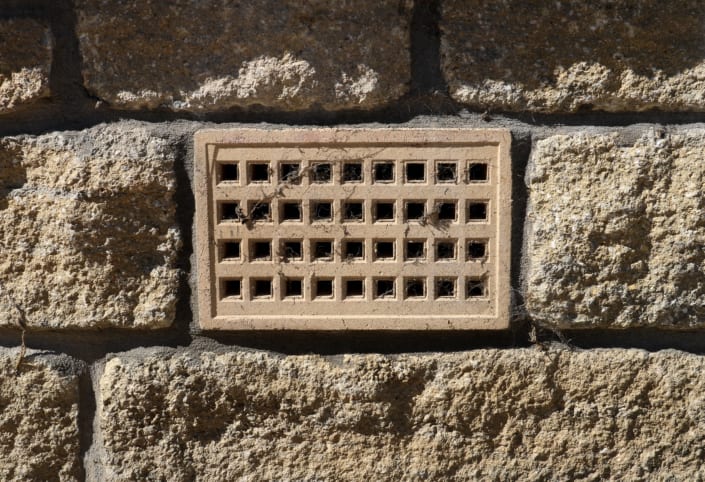
MOST CRAWL SPACES ARE INADEQUATELY VENTILATED
Although most crawl spaces are vented, they are still passive systems, meaning that ventilation only occurs due to pressure changes and wind that happens to blow through the vents. Few crawl spaces have powered ventilation systems, which can create their own problems. Limited ventilation results in an accumulation of stagnant air. In this environment, mold, radon, and moisture (which attracts termites and rodents) can build to dangerous levels.
Warm air inside a home rises and escapes through the attic, drawing in cooler air from lower levels, including outdoor air and air from the crawl space. Running exhaust fans in the kitchen and bathrooms creates a negative pressure inside the home. This negative pressure also draws in air from outside the home and from the crawl space.
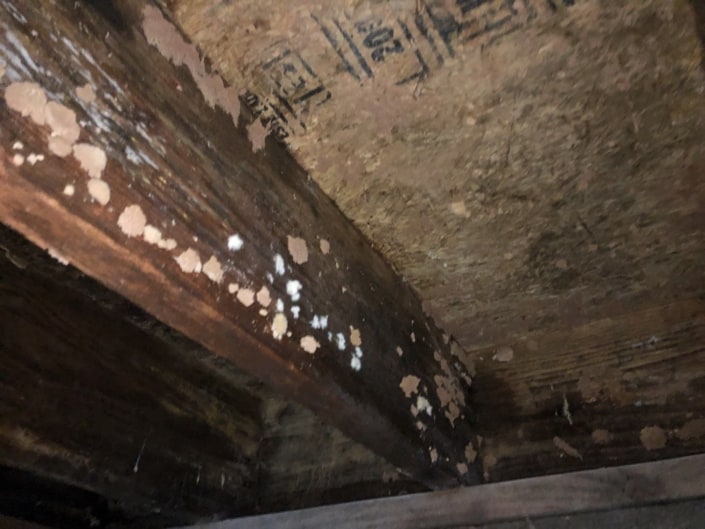
YOUR HVAC SYSTEM MAY BE CIRCULATING DIRTY AIR
HVAC systems are frequently located in the crawl space. Most HVAC systems, even many new systems, have some leaks around the air filter, between individual sections of ductwork and at the duct boots. These leaks reduce system efficiency and allow dirty crawl space air into the system and your home.
Although your crawl space is not part of the living space of your home, you should think of it as an extension of the breathing space of your home when it comes to indoor air quality. Like it or not, you are breathing air from your crawl space.
To learn more check out our post: HVAC System in Your Crawl Space? You May Be Breathing Dirty Air.
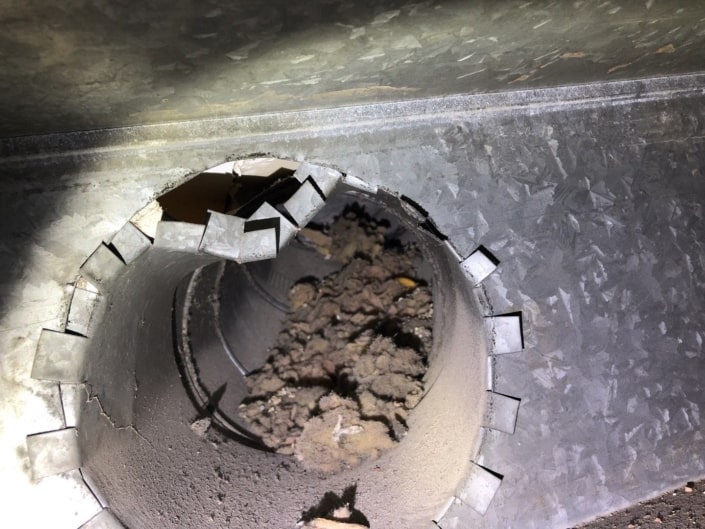
WHAT HAPPENS DURING A CRAWL SPACE INSPECTION?
Whether you live in our service area or not, we want everyone to know what to look for in a mold remediation company. The company you choose should offer a comprehensive mold and indoor air quality inspection that you pay for, not hand over a price without truly investigating the problem.
The primary reason you want to pay for a comprehensive inspection is the time and resources that go into the inspection. Some of our competitors offer “free” inspections, which basically means that the inspector shows up and hands over a price to fix a symptom, without truly knowing the nature of the problem. Our inspectors go over your entire home top to bottom. We don’t just check out one area of your home, we look at it all. From the top of the rafters to down deep in the crawl space, we inspect everything.
Sometimes the mold problem can be easily diagnosed and repaired, like a pipe leaking under the house, but other times we don’t see mold at all. Because the root of the problem is beyond the obvious, we need to think outside the box. No company that offers a free mold inspection will go to such lengths to determine the cause of your problem.
To learn more about the inspection process check out our post: Do You Have Mold? How to Choose Between a Paid or Free Mold Inspection.
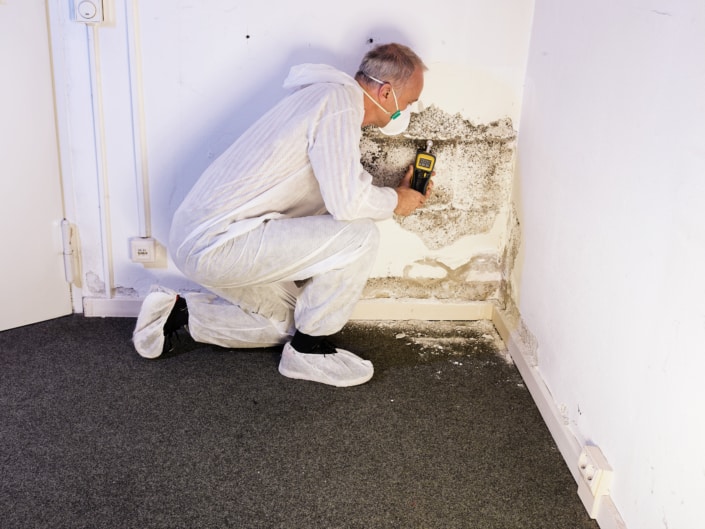
WILL INSURANCE COVER CRAWL SPACE MOLD REMOVAL COSTS?
Well, yes and no. If you have a catastrophic event, such as a tree fall, and the mold grows as a result, then it might be covered. It depends on your individual insurance policy. Preventable mold growth, such as growth caused by a slow water leak, is normally not covered by homeowners insurance.1 Insurance companies expect you to take care of your own property, that includes: keeping your roof in good shape, preventing leaks in the roof and plumbing, checking your basement or crawl space regularly, properly ventilating the bathroom, etc.
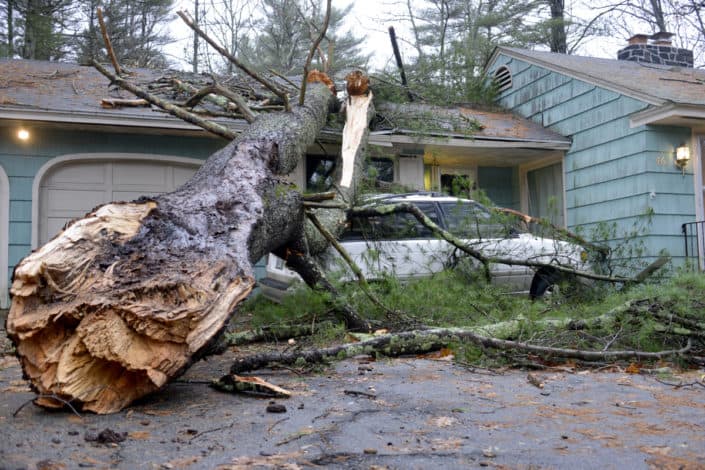
WHAT DOES CRAWL SPACE MOLD REMOVAL LOOK LIKE?
If the inspection of your home indicates that you have mold, your inspector will let you know the extent of the damage, and what repairs need to be made, such as fixing leaking pipes. The inspector will define the extent of the necessary work, and what may or may not need to be done. Your inspector should talk through all your options and tailor a plan that fits your needs and your budget.
To learn about the mold removal or remediation process from start to finish check out our post Home Mold Remediation for all the details.
Especially if you don’t live in our service area, you need to check out our post: How to Choose a Mold Removal Company. We tell you every question you should ask a mold removal company, and give you the details you need to know.
THE BRANCH DIFFERENCE
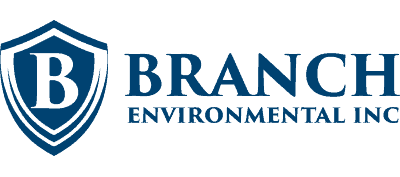
If you think you’ve got a real problem, you’re far better off with a thorough inspection like ours. At Branch Environmental, we analyze the symptoms to determine the root cause of your problem. We see each mold inspection as an in-depth investigation, not an opportunity to hand over a guess-based estimate of work. If you think you may need a crawl space mold inspection, get in touch with us, and we’ll get down to the source.
Call Branch Environmental. We’re experts not only at mold removal, but at determining and remediating the underlying causes. From hidden mold sources to major contaminants, we can identify exactly what is going on in your home and rid it of environmental toxins, often for good.

